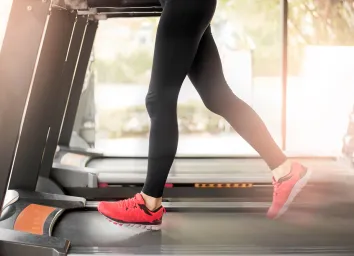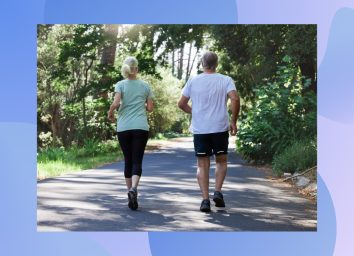One Walking Mistake That Hurts Your Body, Says 76-Year-Old Former Olympian
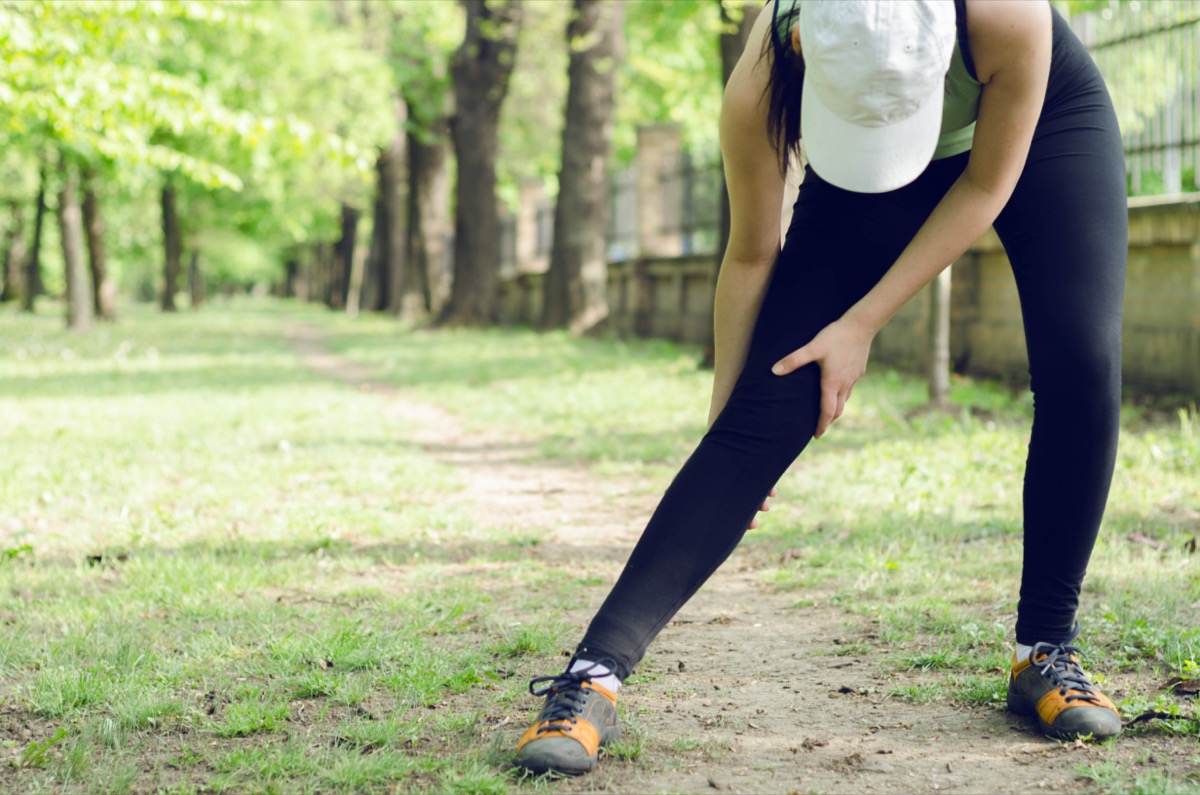
It’s one of the greatest myths of walking that only older people—or those who are physically incapable of other forms of exercise—are the only ones who choose to walk for exercise. Our own resident trainer, Tim Liu, C.S.C.S., swears by walking—and so do countless others. Hardcore body builders, professional athletes, and endurance racers? They all love to walk, whether it’s simply to burn a few more calories or to help aid in their recovery.
In fact, many elite athletes will tell you that walking is actually better for you than running. “Running may be superior in terms of time-management and weight loss, but many people find walking more comfortable, enjoyable, and thus more sustainable,” Australian Olympian Jemima Montag, who won the gold medal at the 2018 Commonwealth Games and came in 6th in the Women’s 20km Walk event at this year’s Olympic Games in Tokyo, has said. “Walking is associated with a lower risk of injury and, ultimately, going for an enjoyable walk every day is more productive than going for one hard run and being put off exercise for months.”
One former fitness pro, a former Olympic distance runner named Jeff Galloway, 76, turned to walking for exercise in the 1970s when he set his sights on training and wanted to help others get into fitness. He believed walking to be a better form of exercise than running. “According to a lot of research, our ancestors did very little running,” he explains in a new interview with Prevention. “We were mostly designed in evolution to be long-distance walkers.”
Several decades—and more than 300,000 students later—and Galloway continues to teach walking. And, according to him, there is at least one major no-no that he revealed that all exercise walkers should avoid doing for their sake of not only their workout but also for the safety of their bodies. Read on to learn what it is. And if you’re a diehard walker, make sure you’re aware of The Secret Cult Walking Shoe That Walkers Everywhere Are Obsessed With.
It’s Crucial That You Don’t Over-Stride
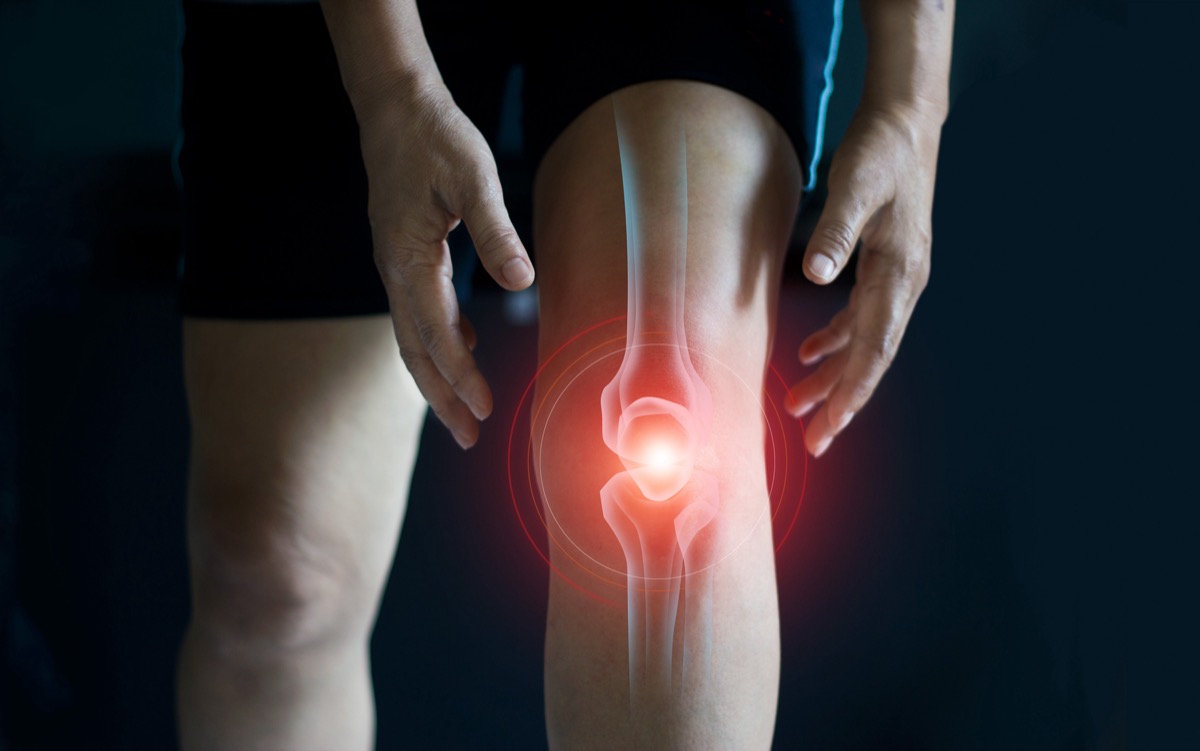
In exercise walking, if you want to go faster and get a better workout, logic will tell you than an easy way to do so would be to start taking longer strides. After all, if you want to cover more ground, better to lengthen your steps, right?
Well, wrong.
“Overstriding occurs when, during an effort to increase stride length, the knee locks as you reach with the lead foot,” describe the experts at SportMedBC. “The lead foot then lands in front of your center of gravity, causing jarring and braking. In this position, the knee is less able to absorb shock and sooner or later pain results.”
According to Galloway, it’s one of the worst mistakes you can make while exercise walking. “I’ve seen more injuries from long walking strides than I’ve seen from running,” he told Prevention. Instead, he recommends that you take gentler, shorter strides. And for more on the benefits of walking, check out Exactly How Fast You Need to Walk to Live Longer, Says Science.
Shorter Strides = A Faster Walk and More Calories Burned
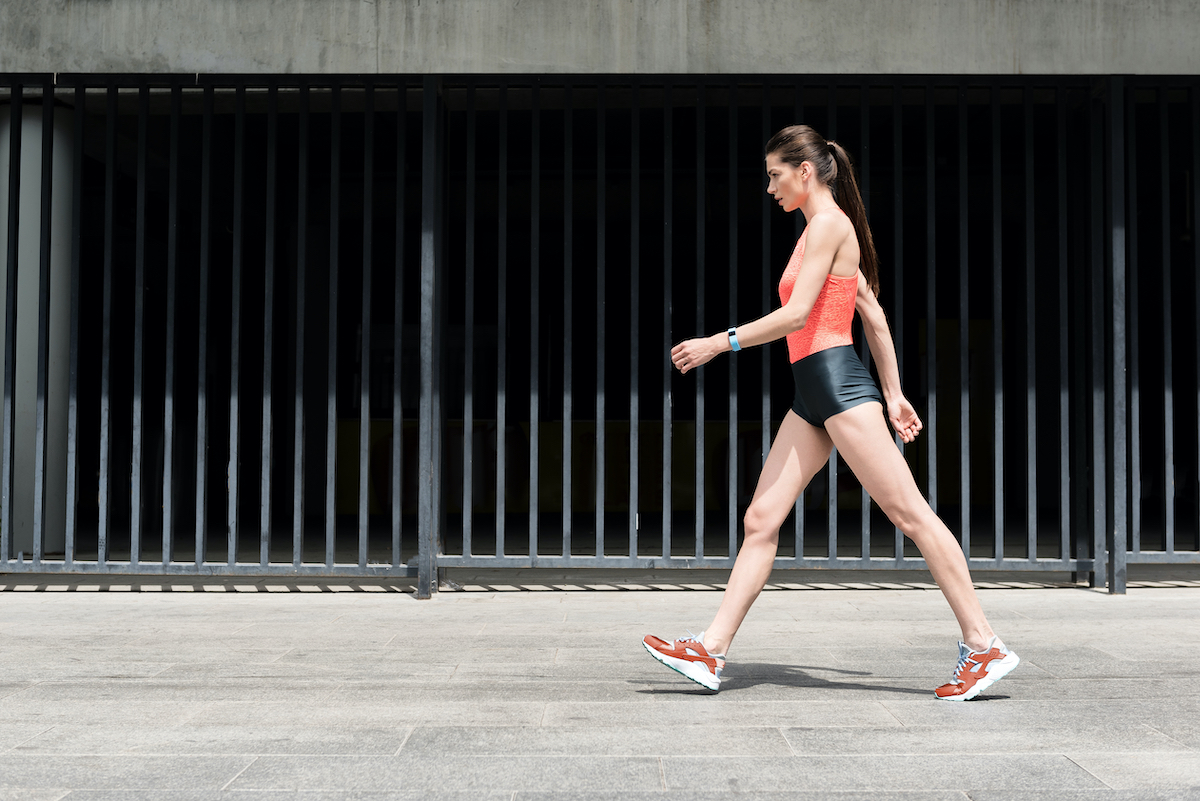
Galloway’s not the only walking expert to tout the benefits of taking shorter strides. “Shorter, quicker steps are the key to going faster,” say Leslie Bonci, MPH, RD, CSSD, LDN, and Michele Stanten, in their book Walk Your Butt Off! “Shorter, quicker steps allow for a smooth, rolling stride, and they make it easier for you to shift your body weight over your front leg and swing your back leg forward.”
Here’s How to Do It

Contrary what many people may think, there is such a thing as proper walking mechanics. It all starts with your posture—you need to walk with your chest tall, your shoulders back, and with your head in the proper position. “Think of your neck as part of your spine as a whole rather than a separate entity and try to increase the space between your vertebrae, expanding it like the bellows of an accordion,” advise the experts at Bristol Nordic Walking. To do so, imagine that you’re lengthening your spine “right up into your head.”
Then, you need to need to make sure your elbows are bent and not straight, so that they can swing naturally.
As for your feet: “You want to lead with your heel on the ground, and finish with the toes,” says Liu. “In terms of your stride length, keep it small to medium length. If you can hear your foot smacking the ground, shorten your stride stat.”
Finally, you need to breathe through your nose. Why? “Well, it’s better for us physiologically, because it filters out dust in the atmosphere, humidifies the air, and helps improve oxygen circulation,” says Liu. And for more on being a better walker, don’t miss The Secret Trick for Walking for Exercise, Says Harvard.
